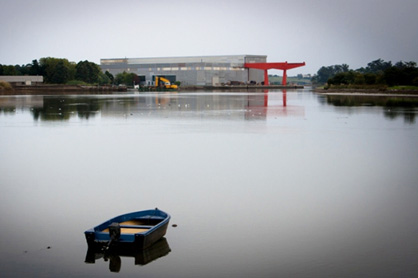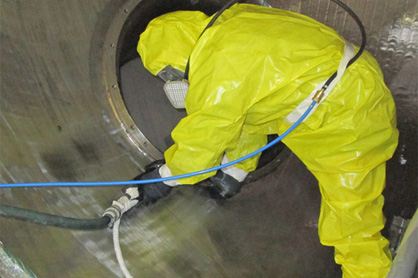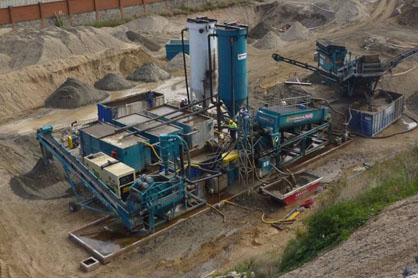A new life for radioactive lands
 Have you ever thought about the destiny of the land occupied by a nuclear power plant when closed? Can it be reused? Not until now, but two Spanish companies, Ensa y Sereco Gestión, with EEA Grants financing, are researching and developing an effective technology to eliminate the radiological element of contaminated lands and materials in order to restore the contaminated area as much as possible.
Have you ever thought about the destiny of the land occupied by a nuclear power plant when closed? Can it be reused? Not until now, but two Spanish companies, Ensa y Sereco Gestión, with EEA Grants financing, are researching and developing an effective technology to eliminate the radiological element of contaminated lands and materials in order to restore the contaminated area as much as possible.
26.08.2014
Nowadays, there are 147 nuclear facilities in the path of dismantling all over the world and for 2030, 200 are expected to close. However, what about the radioactive landfills left behind? Contamination of areas with radioactive isotopes is a serious environmental problem.
 Trying to solve this problem, two companies from Cantabria (north of Spain), Ensa and Sereco Gestión, and a research group from the Cantabria University (Grupo Radón) have joined forces to develop an effective technology to eliminate the radiological elements of contaminated lands and materials obtained during the decommissioning of nuclear power plants and other radiological facilities. The aim is to restore up to 90% of the contaminated area and to minimize the quantity of radioactive wastes to treat and/or to storage. This is if one of the 89 projects selected in the first Open Call within the EEA Grants Environmental and Climate Change-related research and technology Programme, operated by CDTI.
Trying to solve this problem, two companies from Cantabria (north of Spain), Ensa and Sereco Gestión, and a research group from the Cantabria University (Grupo Radón) have joined forces to develop an effective technology to eliminate the radiological elements of contaminated lands and materials obtained during the decommissioning of nuclear power plants and other radiological facilities. The aim is to restore up to 90% of the contaminated area and to minimize the quantity of radioactive wastes to treat and/or to storage. This is if one of the 89 projects selected in the first Open Call within the EEA Grants Environmental and Climate Change-related research and technology Programme, operated by CDTI.
As the project promoters explain, now when there is a contaminated soil “it is closed with a ‘no trespassing’ warning and that’s all”. For that reason, there are a considerable amount of potential beneficiaries of the project –which includes validation of the technologies developed at the lab-scale and their integral and advanced development at semi-industrial scale.
 Undoubtedly, the two companies do not lack experience. Ensa has been supplying components to the nuclear power plants all over the world for 40 years and Sereco has proved its know-how in the soils and groundwater remediation in environmental disasters like the Prestige oil-spill. Together, if successful, the project may revolutionize the treatment of the radioactive contaminated soils in the world.
Undoubtedly, the two companies do not lack experience. Ensa has been supplying components to the nuclear power plants all over the world for 40 years and Sereco has proved its know-how in the soils and groundwater remediation in environmental disasters like the Prestige oil-spill. Together, if successful, the project may revolutionize the treatment of the radioactive contaminated soils in the world.